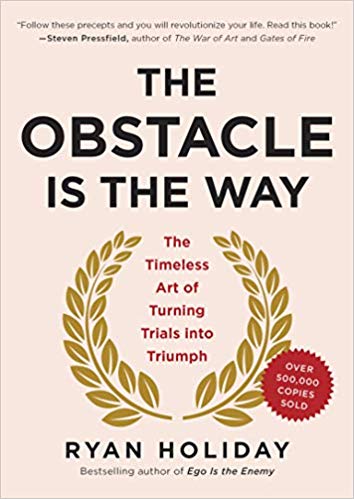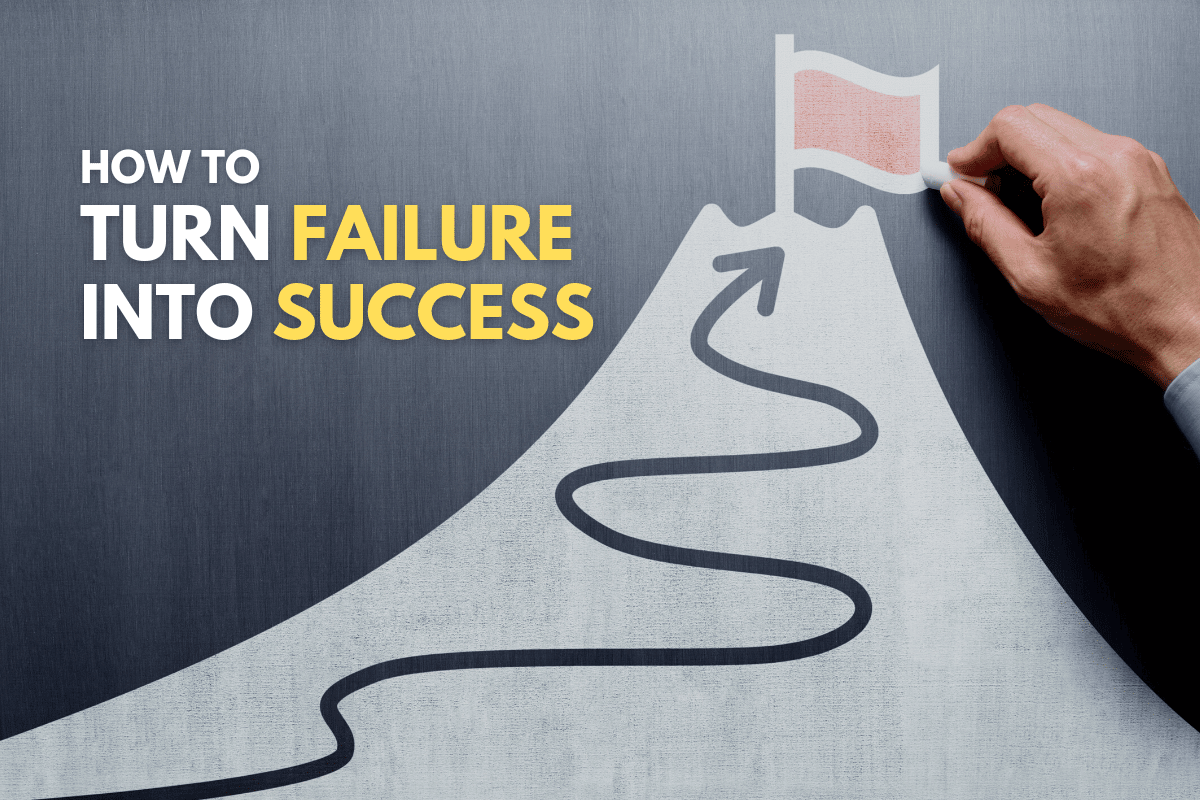Nobody likes to fail. Everyone shuns failure because it makes us feel ashamed, humiliated, and hurtful. But without failure, there is no way we can be successful.
Many people think that failure is the opposite of success. No, it is not.
If you study how successful people went through their journey and went on to achieve extraordinary results in life, you will discover that they all have experienced setbacks and failed many times in their journey.
Highly successful people seem to be immune to failure. In fact, some of them even welcome failures.
When Thomas Edison was asked about his failed experiments, he said…
“I have not failed. I’ve just found 10,000 ways that won’t work.”
Thomas Edison
Steve Jobs, the man who revolutionized the computer and mobile industry, and the man who inspired millions, was once fired from Apple, the company that he started.
In his commencement speech at Stanford University in 2005, Jobs said that when he was fired, he felt devasted. He felt that he was very publicly out and felt that he had failed big time in his life.
Many years later, when he looked back on his life, he found that being fired was one of the best things that could happen in his life.
This is because without being fired, he would have never found NeXT computer and would never be presented with the opportunity to purchase Pixar.

And due to the turn of events, Apple bought NeXT and Jobs managed to get back to Apple. The rest, they say, was history.
As you can see, failure does not need to be negative, unless you make it so.
In fact, if you know how to turn failure into success, failure can catapult you to higher ground. And that means failure can make you more successful.
Just like when Richard Branson was stranded due to his flight being canceled, he looked at the incident as an opportunity rather than a setback.
Branson then chartered a plane and borrowed a blackboard and wrote on top of the blackboard, “$39 one way to BVI”.
He then walked around the airport and quickly filled up his chartered plane with those other passengers who were also stranded there. You can read the story here.
And that was how Branson started Virgin Airlines – by turning setback/failure into success.
This is exactly what you are going to learn in this article too.
I’m going to share with you 3 fundamental principles on how you can turn your failure into success.
No matter what kind of difficulties, setbacks, rejections, or hardships you face in life, apply these 3 principles and you can transform your failures into successes.
1. Turn Failure Into an Opportunity

In 1968, a guy named Spencer Silver was working on developing an ultra-strong adhesive for use in aircraft construction in a company called 3M.
Silver was supposed to make a super-strong adhesive, but due to his mistake, he created an adhesive called acrylate copolymer microspheres, which were weak, pressure-sensitive adhesives.
The adhesive created was a failure. At that time, nobody wanted to use an adhesive that was weak and was unable to find a profitable application for the technology.
5 years later, Silver managed to convince Geoff Nicholson, the new product laboratory manager to give the product a go.
The only marketable idea for the adhesive was to use it as stick-able paper on the bulletin boards.
After several more years of testing, the product was finally launched in the real world and was only available in 4 cities in 1977.
As expected, nobody wanted to buy the product and the sales were low.
Luckily, Nicholson did not give up. He came to understand that the reason the product was not selling well was that it was a new idea and most people have no idea about its value.
So in the year 1978, 3M tried one more time by sending large numbers of free samples to companies to try and then tracking how many of the companies actually re-ordered the product.

And to everyone’s surprise, nearly 90% of the companies given samples re-ordered the product, showing that there was a strong demand.
These days, the company, 3M, sells around $3.5 billion dollars worth of Post-In Notes annually. You can read the success story of the Post-It Notes from 3M’s website.
The Post-It Notes from 3M is a great inspirational failure-to-success story. But, what can you learn from it? How can you use the lesson from the story to turn your failures into successes?
Change Your Perception
If you want to transform your failure into success, you must choose to look at failures differently.
Do you know that the word, “crisis” in Chinese is made up of 2 words, “danger” and “opportunity”?
This means that when there is “failure”, there will be an “opportunity”.
But in order for you to see the opportunity, you must first change your perception of failure.
Stop looking at failure as failure. Look at it as an opportunity for you to grow to higher ground.
Ryan Holiday, a successful entrepreneur and a best-selling author, shared his 5 ways how one can deal with hardship by turning crisis into opportunity. You can read the article from Entrepreneur.com here.
And if you want to learn more about how you can do this, read the book by Ryan Holiday, The Obstacle Is The Way.

2. Turn Challenges Into Motivation

In the 1990s, when John Patterson, the founder of NCR (National Cash Register Company) was so displeased with the sales executive, he fired them all. Fully one-sixth of NCR executives were dismissed and one of them was a guy named Tom Watson.
Watson felt unfair and he took Patterson’s firing in stride and joined a small competitor to NCR. The company Watson joined was called Computing-Tabulating-Recording Company, a small firm at that time.
However, Tom Watson stayed there for the next 40 years to become the CEO and chairman of the company. Under Watson’s leadership, CTR became one of the most successful American companies in history.
The company was then renamed to a company that you knew – International Business Machines, or IBM in short.
So, welcome frustration. Welcome setbacks and treat them as challenges to motivate you to go even further, as Tom Watson did.
Here’s another real-life story. According to History.com, a guy named Lee Iacocca was hired by Ford as an engineer in 1946 but soon switched to sales because Iacocca excelled there.
By 1960, Iacocca had become the vice president and the general manager of Ford’s marketing division. And in 1970, Henry Ford II promoted Iacocca as the president of Ford.
However, due to Iacocca’s unorthodox and brash style, he went into conflict with his boss. And in 1978, Henry Ford II fired Lee Iacocca from the company.
After Iacocca was dismissed, he was then hired by Chrysler Corporation, a car manufacturer that was facing bankruptcy at the time. With Iacocca came around, he turned Chrysler into a profitable company with a record profit of $2.4 billion in 1984.
Transform Setbacks Into Motivation
There are many more stories of successful people who transformed their setbacks and failures into motivation that pushed them to greater success.
So, the next time when you are faced with hardships, don’t give up. Don’t feel dejected. Instead, treat them as challenges.

Like what Arnold Schwarzenegger said in USC Commencement Address:
“As a matter of fact, I love it when someone says that no one has ever done this before, because then when I do it that means that I’m the first one that has done it. So pay no attention to the people that say it can’t be done.”
When someone says that it is impossible, you can choose to agree with them and give up or you can choose to prove them wrong.
When people throw stones at you, you can either throw the stones back at them or use those stones to build an empire.
Therefore, turn your failures into motivation. Use your failures as an inspiration to go forward.
When you fail, don’t say “why me”, instead, say “try me”!
3. Transform Failure Into Lessons

One of the most powerful factors that make successful people successful is that they learn from their mistakes and failures.
Failure is only a failure when you do nothing about it. You can fall down many times, but that doesn’t mean that you should stay there.
But things will be different when you treat failure as a lesson. Like what Bill Gates has to say:
“Success is a lousy teacher. It seduces smart people into thinking they can’t lose.”
Bill Gates
You have to understand that there are no failures, only lessons.
Failure is no different from success. It is just an event or an incident telling you that you did not get the results that you want.
The problem with most people is that they treat themselves as a failure when they don’t receive the results that they want.
When they identify themselves as a failure, they feel dejected. They quickly lose their motivation and they feel ashamed of their work.
The truth is that failure is just an event, not a person. When you fall, you can choose to stay there or get back up. It is only a failure when you choose to stay there.
Reframe the Meaning of Failure
First, you must reframe the meaning of failure. You have to understand that failure is not there to stop you, but to tell you that what you did is not working and that you have to change your approach.
Just because you fail today does not mean that you are a failure or you can’t be successful in the future.

You have to learn from the baby. When a baby learns to walk, she falls down many times. So what do you do? Do you stop her from walking?
Not at all. You show the right way to stand steadily. You encourage her to keep on trying until she walks, right?
This is what you should do too when you face an obstacle or a failure in your life.
Reframe failure, treat it as feedback, and then improve your approach and do it again until you succeed.
When you study successful people, you will see that they have all gone through failures in their journey. But they do not give up.
Like what you have learned, they turned failures into lessons. They transformed themselves from caterpillars into beautiful butterflies.
You have to understand that failures are necessary.
Failures are there to help you grow. Setbacks are there to make you a better person worthy of greater success. Hardships are there to build your character.
Hence, embrace failures and turn them into your success.
I recommend you commit to continuous learning by reading books. If you have no idea what books to read, check out this list. It’s my personal recommendation.
Conclusion
Failure, setbacks, hardship, etc., are common things in life. No matter who you are, you are bound to face these events.
And if you want to be successful in life, you must learn how to turn failure into success.
You must learn the 3 principles I shared above and transform your setbacks into feedback. Use your failures to motivate you and find the opportunity within the difficulties.



[…] key to turning your failures into successes is about how you handle the failures when they […]
[…] 3 Fundamental Principles How to Turn Failure Into Success […]
[…] So, what do you need to do when you fail? Here are the 3 fundamental principles on how to turn failures into success: […]
[…] Read: 3 Fundamental Principles How to Turn Failure Into Success […]
[…] Read: 3 Fundamental Principles How to Turn Failure Into Success […]
[…] Read: 3 Fundamental Principles How to Turn Failure Into Success […]
[…] Need more help? Read this: 3 Fundamental Principles How to Turn Failure Into Success […]
[…] Read: 3 Fundamental Principles How to Turn Failure Into Success […]
[…] Transform your failures into success. […]
[…] Read: 3 Fundamental Principles How to Turn Failure Into Success […]